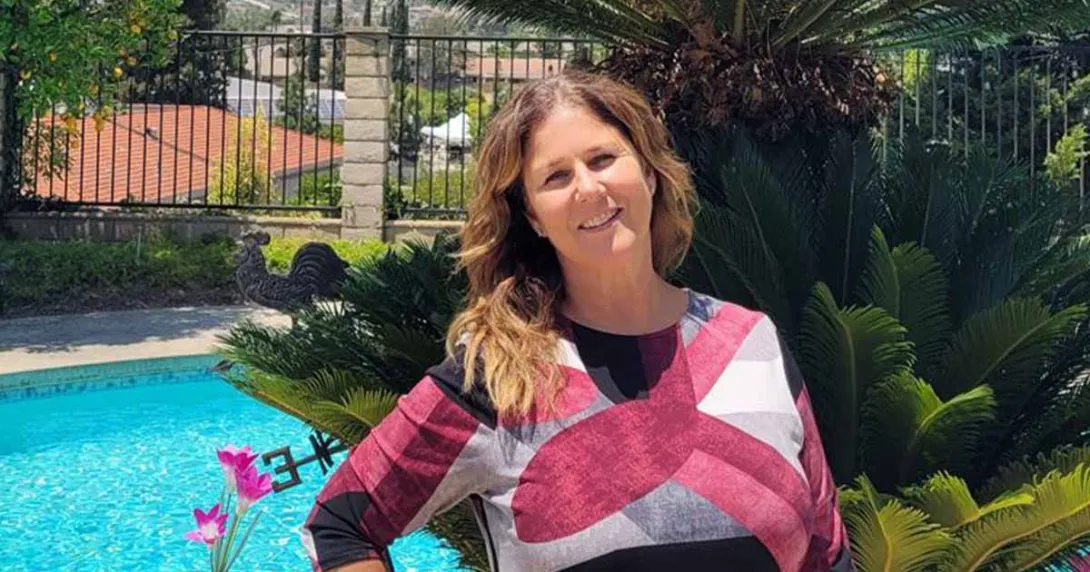
Providence is one of the largest Catholic health systems in the U.S., operating a network of hospitals, clinics and physician groups across seven states, including California, Washington, Oregon, Alaska, Montana, New Mexico and Texas.
Its network includes thousands of employed and affiliated providers with an emphasis on delivering coordinated, value-based care. In California, its delivery network represents 17 hospitals and more than 200 clinics.
THE CHALLENGE
Providence in California faced significant challenges within its value-based care contracts, primarily because of manual data processing. It received patient care gap lists from multiple health plans, each requiring the health system to close care gaps through various means such as screenings, lab tests and visits.
While many care gaps were successfully closed, the absence of essential data to health plans forced the Providence team into time-consuming chart mining and to remove barriers to efficient data sharing. The varying formats accepted by health plans added another layer of complexity, requiring Providence to adhere to different data-sharing methods to demonstrate patient compliance across different metrics.
"The administrative burden of managing numerous patient lists from various health plans, regions and lines of business severely complicated performance monitoring and thwarted real-time patient outreach efforts," said Michelle Best, executive director of quality improvement at Providence.
"It was hard to keep track of where you were within each health plan's performance, and we needed multiple people to manage this information to be successful. These patient lists also came in many different formats and would often be sent to the offices directly. Our quality team spent considerable time centralizing these lists to support our physicians and facilitate patient outreach."
Operational staff at the point of care lacked necessary real-time information, resulting in missed opportunities and lower compliance rates. One of the key challenges was that the EHR system couldn't integrate with any tool that would have alerted that a care gap needed to be closed.
Providence invested heavily in patient outreach and follow-up to close open care gaps – particularly through phone calls, which were the most effective but also the most expensive method. If patients weren't caught during a visit, they had to be reached afterward. This created a major operational burden for the teams, who had to rely on labor-intensive outreach strategies to ensure compliance.
"Moreover, we faced persistent challenges in developing dashboards and scorecards due to a lack of raw data, resulting in laborious manual tracking," Best explained. "Although meeting with health plans often required data reconciliation, our previous program in use accepted the best rates from both data sets, reducing the need for alignment.
"This challenge of not aligning with health plans created a barrier to how we were showing performance and what the health plans would report," she continued. "There were additional struggles with delayed claim data and tracking so when we outreached to patients, there was a lot of waste in money, time and resources to patients who had already closed their gaps."
PROPOSAL
The proposed risk and quality reporting technology aimed to enhance California Providence's value-based care contracts by organizing the different lines of business within the organizational hierarchy. This was to provide visibility into contract performance, supplying raw data for dashboards and scorecards, and facilitating data reconciliation with health plans amid a shifting contract landscape.
"This technology promised to automate processes and reduce our manual workload," Best said. "It would allow for real-time reconciliation of health plan care gap reports, offering accurate insights into patients' care needs. The technology could ingest external data, such as claims, registry and EHR data, to automate care gap closures.
"As the contract landscape evolved, the tool would improve accountability between health plans and provider organizations, embedding point-of-care capabilities into operational workflows," she added.
The tool, from vendor Cozeva, is designed to help health systems close care gaps at the point of care and reduce some of the patient outreach efforts on the back end.
"By integrating scheduling files weekly, our teams could identify care gaps before and during patient visits," Best explained. "With standing orders and protocols, the tool would mitigate past challenges by ensuring operational staff addressed care gaps during office visits. The claim and encounter data capturing the closure of care gaps would feed into this tool on a weekly basis, providing visibility into our contract performance across multiple contracts and lines of business.
"It would also help reduce the manual workload of data entry by incorporating different types of supplemental data," she continued. "Additionally, it would assist in reconciling health plan care gap reports because we would have more real-time data to compare their lists to. Having the raw data for reporting would enable us to stay on top of open care gaps and develop strategies to close them sooner. Altogether, this would help improve contract performance."
MEETING THE CHALLENGE
When issuing its request for proposal, Providence sought a tool to efficiently manage the growing number of contracts. The tool needed to display accountability metrics and compliance rates, and drill down to multiple hierarchy levels, including the patient level.
"It needed to go deep and wide, as we have patients and contracts across California," Best noted. "It required real-time capabilities to assist operational teams with accurate patient outreach, integrating both standard and non-standard supplemental data for closing care gaps with a two-step approval process.
"Cozeva's platform enabled the management of care gap reports from health plans, demonstrating closed gaps and sharing data in an acceptable format," she continued. "Having this type of technology allowed us to perform better each year in our contracts and eliminated many of the challenges we were currently facing."
Providence's approach to quality improvement emphasizes minimizing provider workload while using workflows for medical assistants, advanced practice clinicians, quality team members, pharmacists and many others to help close care gaps without solely relying on providers.
"Our affiliated network providers use this tool more frequently than medical group providers, leveraging it for point-of-care insights to identify patients' needs before and during visits," Best reported. "Our teams focus on health equity using a geo-mapping feature to identify patients in certain areas who need specific interventions to provide culturally competent care.
"This technology is integrated within the medical group Epic EHR, and the tool has an 'overlay feature' compatible with various EHR systems across California that we use for our affiliated network providers," she continued. "Streamlining processes and reducing manual work have allowed us to expand VBC contracts, building on a solid foundation for success."
RESULTS
From 2016 to 2024, Providence successfully increased from one to more than 50 value-based care quality contracts, growing its covered population from 100,000 to more than 650,000 patients.
"These gains have been matched by performance: More than 50 quality awards in 2024 alone," Best reported. "We continue to add more providers to our network and have been able to expand from primary care providers to include our APCs and specialists.
"We have increased our lines of business scope to now include commercial and senior HMO and PPO lines of business, as well as senior PPO, Medi-Cal and Medicare Shared Savings Program patients, and manage all types of quality contracts from ACOs, shared risk to full risk, quality gates, and quality multipliers," she added.
The implementation of a tool that efficiently organizes patients, metrics and data has made managing the success of these contracts feasible, she continued.
"We have experienced a significant increase in quality awards, growing from 15 awards in 2016 to more than 50 by 2019, and maintaining more than 50 awards in 2024," she said. "These awards reflect our tangible quality performance outcomes and the positive impact on patient lives."
Some of the awards included: excellence in healthcare; top ten percent performance in patient experience and top ten percent performance in cost in our AMP CA Quality program; type 2 diabetes gold recognition and BP silver recognition from the American Heart Association; and ELITE status in America's Physician Groups' 2024 Standards of Excellence Survey.
"Recently, we were acknowledged by a health plan as their top provider organization for Medicare Advantage and continue to be recognized as industry leaders across various health plans," she said.
Cozeva's technology enables Providence to concentrate on various disease states, cancer screenings, immunizations and medication management for at-risk patients, facilitating care gap closure through targeted outreach and interventions.
"We have effectively addressed the needs of our poor and vulnerable patients, including our BIPOC population with uncontrolled hypertension, improving compliance and closing disparity gaps these past few years," Best reported. "We continue to close the disparity gaps for this population and increase our compliance rates year over year.
"It also allows us to identify populations of patients who may have language barriers, transportation issues or food insecurities as our community health workers focus on social determinants of health screenings," she continued.
The health system has continued to use different technologies that Cozeva has developed and most recently started using the platform's natural language processing tool.
"In 2022, we processed more than 18,000 outside service entries using the NLP tool, which approved 46% of these entries, saving more than 450 manual hours in the first year," she noted. "By 2024, we maintained 18,000 entries with the tool approving 48%, saving 475 manual hours. As we continue to work closely with our vendor, it's these types of technologies that are put in place to help reduce the manual workload we continue to face while continuing to improve care quality."
ADVICE FOR OTHERS
Regarding the value of a risk and quality reporting tool and related technologies, Best emphasizes to her peers that such a tool is essential for successful and proactive management of VBC contracts.
"You need a tool that is going to help you manage and organize the many facets of your VBC quality contracts and help you drive to success," Best advised. "A great tool will centralize all types of data to help you make decisions around cost, quality, risk and patient experience.
"It can help to monitor patients through the continuum of care and keep data in one central location that is especially helpful when you are having to manage data with affiliated providers that are all in disparate EHR systems," she continued. "This kind of technology also helps to facilitate care coordination across the continuum by integrating various data types from different sources, creating a single source of truth."
These types of tools are needed to reduce the hours spent on setup, monitoring, outreach and performance of contracts, she added. Such platforms are disease registry and management tools, which offer much-needed support to close patient care gaps, track performance and share this data seamlessly with health plans, she concluded.
Follow Bill's HIT coverage on LinkedIn: Bill Siwicki
Email him: bsiwicki@himss.org
Healthcare IT News is a HIMSS Media publication.
WATCH NOW: Grabbing the Chief AI Officer brass ring – and working with top brass


